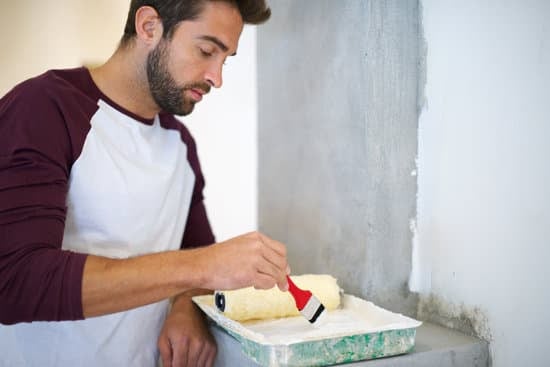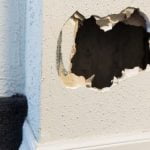Are you looking to make energy efficient improvements to your home? Do you want to know what qualifies for the energy efficient home improvement credit? Look no further. In this article, we will provide you with a comprehensive guide on understanding, maximizing, and claiming the energy efficient home improvement credit.
Making energy efficient improvements to your home not only benefits the environment but also comes with financial incentives. The Energy Efficient Home Improvement Credit is designed to encourage homeowners to make eco-friendly upgrades by offering tax credits for qualifying projects. From solar panels to energy-efficient windows, there are various improvements that can qualify for this credit.
In this overview section, we will take a closer look at what qualifies for the energy efficient home improvement credit, the benefits of making these improvements, and the process of claiming the tax credit. Whether you are considering making upgrades to your property or simply want to learn more about this tax credit, this article will equip you with all the information you need.
The Benefits of Making Energy Efficient Improvements to Your Home
Making energy efficient improvements to your home comes with a wide range of benefits, both for the environment and for your wallet. Here are some key advantages to consider:
- Lower Energy Bills: By making energy efficient upgrades such as installing insulation, upgrading windows, or using energy-efficient appliances, you can significantly reduce your monthly energy bills.
- Environmental Impact: Energy efficient improvements help decrease your home’s carbon footprint by reducing the amount of energy it consumes. This contributes to the overall effort to combat climate change.
- Increased Home Value: Energy efficient homes are becoming increasingly desirable in the real estate market. By making these improvements, you can potentially increase the resale value of your home.
In addition to these benefits, making energy efficient improvements can also make your home more comfortable and healthier to live in. For example, better insulation and air sealing can help maintain a more consistent indoor temperature, while improved ventilation systems can contribute to better indoor air quality.
When considering whether to make energy-efficient upgrades to your home, it’s important to weigh these benefits against the upfront costs of the improvements. While there may be an initial investment required, the long-term savings and other advantages often make it a worthwhile decision for many homeowners.
What Qualifies for the Energy Efficient Home Improvement Credit
When it comes to qualifying for the Energy Efficient Home Improvement Credit, it’s important to know which home improvement projects are eligible for this tax credit. Typically, eligible improvements include those that make a home more energy efficient and reduce the homeowner’s reliance on non-renewable energy sources. This can include upgrades such as installing energy-efficient windows and doors, adding insulation, improving heating and cooling systems, or using alternative energy sources like solar panels.
To be considered for the tax credit, these improvements must meet certain standards set by the government. For example, energy-efficient windows and doors must meet specific U-factor and Solar Heat Gain Coefficient (SHGC) requirements to qualify.
Similarly, insulation must meet minimum R-value requirements, and heating/cooling systems must be ENERGY STAR certified. When it comes to alternative energy sources, such as solar panels or geothermal heat pumps, they must also meet specific criteria to be eligible for the tax credit.
It’s important to note that not all energy-efficient improvements qualify for the tax credit. For example, cosmetic upgrades like new paint or flooring are generally not eligible. Understanding which improvements qualify for the Energy Efficient Home Improvement Credit will help homeowners make informed decisions about their home improvement projects and maximize their potential savings.
| Eligible Improvements | Certification Standards |
|---|---|
| Energy-Efficient Windows and Doors | Must meet U-factor and Solar Heat Gain Coefficient requirements |
| Insulation | Must meet minimum R-value requirements |
| Heating/Cooling Systems | Must be ENERGY STAR certified |
| Alternative Energy Sources (e.g. solar panels) | Must meet specific criteria outlined by the government |
How to Determine if Your Home Improvement Project Qualifies for the Tax Credit
To determine if your home improvement project qualifies for the energy efficient home improvement credit, you need to consider specific criteria set by the Internal Revenue Service (IRS). Here are some factors to help you determine if your project is eligible for the tax credit:
- Energy Star Certification: One of the key qualifications for the tax credit is that the products used in your home improvement project must have Energy Star certification. This means they meet the high energy efficiency standards set by the Environmental Protection Agency (EPA).
- Primary Residence Requirement: The energy efficient home improvement credit is only available for improvements made to your primary residence. Second homes and rental properties do not qualify for this tax credit.
- Specific Improvement Types: Not all home improvement projects will qualify for the tax credit. The IRS provides a list of eligible improvements, including insulation, windows and doors, roofs, heating and cooling systems, and solar energy systems.
It’s important to note that simply purchasing Energy Star certified products may not automatically make you eligible for the tax credit. The installation costs of these products can also be included in the qualifying expenses. Additionally, it’s recommended to keep detailed records of your home improvement project, including receipts and manufacturer certifications, as these will be necessary when claiming the tax credit.
Ultimately, it’s crucial to consult with a tax professional or accountant to ensure that your home improvement project meets all the necessary requirements for claiming the energy efficient home improvement credit. They can provide guidance on how to accurately report and claim the tax credit on your federal income tax return.
The Process of Claiming the Energy Efficient Home Improvement Credit
Claiming the Energy Efficient Home Improvement Credit can be a straightforward process if you have all the necessary documentation and information in order. The first step is to ensure that the home improvement project you completed qualifies for the tax credit.
This may include upgrading to energy-efficient windows and doors, installing a solar water heater, or adding insulation to your home. It’s important to keep all receipts and records of the improvements made, as these will be needed when filing your taxes.
Once you have confirmed that your home improvement project qualifies for the tax credit, you will need to fill out IRS Form 5695. This form is specifically for residential energy credits and will require details about the improvements made, costs incurred, and other pertinent information. Be sure to accurately complete this form and double-check all figures before submitting it with your tax return.
After completing Form 5695, you can then claim your energy efficient home improvement credit on your federal income tax return. The credit will directly reduce the amount of tax you owe, potentially resulting in significant savings. Keep in mind that there may be certain limitations or restrictions on claiming this credit, so it’s advisable to consult with a tax professional if you have any questions or concerns.
| Home Improvement Project | Estimated Cost |
|---|---|
| Solar Panel Installation | $10,000 |
| Energy-Efficient Windows | $8,000 |
| Insulation Upgrade | $5,000 |
Common Misconceptions About the Energy Efficient Home Improvement Credit
All Home Improvements Qualify
One common misconception about the Energy Efficient Home Improvement Credit is that any home improvement project will automatically qualify for the tax credit. However, not all energy efficient improvements are eligible for the credit. It’s important to understand which projects qualify and which do not in order to maximize your potential tax savings.
The Credit Covers 100% of Improvement Costs
Another misconception is that the Energy Efficient Home Improvement Credit covers 100% of the costs for making energy efficient improvements to your home. In reality, the credit only covers a percentage of the costs, usually capped at a certain amount. It’s essential to research and understand the specific details and limitations of the tax credit in order to accurately plan for your home improvement project budget.
Only New Homes Are Eligible
Some homeowners mistakenly believe that only new homes are eligible for the Energy Efficient Home Improvement Credit. However, both new and existing homes can qualify for the tax credit as long as they meet the specified energy efficiency requirements. Whether you’re planning upgrades for an older home or adding energy efficient features to a new construction, it’s important to consult with a tax professional or review IRS guidelines to ensure eligibility for the credit.
By dispelling these common misconceptions about the Energy Efficient Home Improvement Credit, homeowners can make informed decisions when planning their energy efficient improvement projects and maximize their potential tax savings. Understanding the specifics of qualifying improvements and accurately claiming the tax credit can lead to significant financial benefits while also contributing to a more sustainable living environment.
Tips for Maximizing Your Savings With the Energy Efficient Home Improvement Credit
Invest in High-Roi Improvements
When considering energy efficient home improvements, it’s important to prioritize those with the highest return on investment (ROI). For example, upgrades such as insulation, energy-efficient windows, and HVAC systems typically provide substantial savings on energy bills. These improvements not only qualify for the Energy Efficient Home Improvement Credit but also continue to save you money in the long run.
Take Advantage of Available Incentives
In addition to the Energy Efficient Home Improvement Credit, there may be other financial incentives available at the federal, state, or local levels. Be sure to research and take advantage of any rebates, grants, or other programs that can further maximize your savings. Some utility companies offer incentives for making energy-efficient upgrades to your home, so it’s worth looking into these opportunities as well.
Plan Your Projects Strategically
To maximize your savings with the Energy Efficient Home Improvement Credit, it’s essential to plan your projects strategically. Consider tackling multiple energy-efficient improvements simultaneously to make the most of the tax credit. By bundling projects together, you can optimize your savings and minimize disruption to your household routine. This approach can also help you take advantage of potential discounts from contractors for larger-scale projects.
Case Studies
When it comes to claiming the Energy Efficient Home Improvement Credit, real-life examples can provide valuable insight into how homeowners have successfully claimed this tax credit. One common example is the installation of solar panels on a residential property. Many homeowners have been able to claim the Energy Efficient Home Improvement Credit by investing in solar energy, which not only reduces their carbon footprint but also saves them money on their energy bills.
Another example of a successful claim for the Energy Efficient Home Improvement Credit is the installation of energy-efficient windows and doors. By replacing old, drafty windows and doors with energy-efficient ones, homeowners can improve the insulation of their home and reduce their energy usage. This type of improvement not only qualifies for the tax credit but also adds value to the property while providing long-term savings on heating and cooling costs.
Additionally, upgrading to energy-efficient appliances such as refrigerators, washing machines, and HVAC systems can also qualify for the Energy Efficient Home Improvement Credit. These improvements not only make a home more sustainable but also contribute to significant cost savings for the homeowner over time.
By providing real-life case studies of successful claims, homeowners can gain a better understanding of how they can benefit from making energy-efficient improvements to their homes while taking advantage of the associated tax credit.
The Future of Energy Efficient Home Improvement
As the push for sustainable living and environmental consciousness continues to grow, the future of energy efficient home improvement is filled with exciting innovations and emerging trends. With advancements in technology and a growing emphasis on reducing carbon footprints, homeowners can look forward to a variety of options for making their homes more energy efficient.
One key innovation to keep an eye on in the coming years is the development of smart home technology. This includes energy-efficient appliances, lighting systems, and heating/cooling units that can be controlled remotely through smartphones or other devices. Smart thermostats, for example, are able to learn the habits and preferences of homeowners, optimizing energy usage and reducing waste.
Additionally, renewable energy sources such as solar power continue to be a major trend in energy efficient home improvement. As solar panel technology becomes more affordable and accessible, many homeowners are opting to install solar panels on their roofs to generate clean and sustainable electricity. Furthermore, new developments in battery storage technology are making it easier for households to store excess solar power for use during times when sunlight is not available.
In the future, we can also expect to see advancements in building materials that improve a home’s energy efficiency. This may include improved insulation materials, window glazing technologies, and construction techniques that reduce air leakage. With these innovations on the horizon, the possibilities for creating an energy efficient home are continually expanding.
Conclusion
In conclusion, it is evident that the Energy Efficient Home Improvement Credit provides significant incentives for homeowners to make energy-efficient upgrades to their properties. The tax credit not only offers financial benefits but also contributes to a more sustainable and environmentally friendly future. By taking advantage of this opportunity, homeowners can not only save money on their taxes but also reduce their carbon footprint and contribute to the greater good.
It is important for homeowners to educate themselves on what qualifies for the Energy Efficient Home Improvement Credit in order to maximize their savings. This includes understanding the eligibility criteria, approved improvements, and the correct process for claiming the credit. By following the guidelines outlined by the IRS, homeowners can ensure that they are making valid claims and receiving the full benefit of the tax credit.
As innovations and trends continue to emerge in the field of energy-efficient home improvements, it is crucial for homeowners to stay informed about new opportunities and technologies. By staying ahead of these developments, homeowners can take advantage of the latest advancements in energy efficiency, further enhancing their homes and reducing their impact on the environment.
Ultimately, making energy-efficient choices for your home goes beyond monetary savings; it is a way to contribute positively to environmental conservation efforts while enjoying a comfortable and sustainable living space.
Frequently Asked Questions
What Qualifies for Federal Energy Tax Credit?
The Federal Energy Tax Credit applies to various energy-efficient improvements made to homes, such as the installation of solar panels, geothermal heat pumps, small wind turbines, and solar water heaters. These improvements must meet specific energy efficiency requirements set by the federal government in order to qualify for the tax credit.
What Qualifies for Form 5695?
Form 5695 is used to claim residential energy credits for the installation of qualified energy-efficient home improvements. These include expenses related to solar electric systems, solar water heating systems, small wind energy property, geothermal heat pumps, and fuel cell properties. Taxpayers must carefully follow the instructions provided with Form 5695 to ensure they meet all eligibility criteria.
What Is the Difference Between Residential Clean Energy Credit and Energy-Efficient Home Improvement Credit?
The Residential Clean Energy Credit is specifically for homeowners who have invested in renewable energy equipment for their primary residence. This credit covers 30% of the cost of eligible solar, wind, or geothermal systems. On the other hand, the Energy-Efficient Home Improvement Credit applies to a broader range of home improvements that enhance a home’s energy efficiency but do not necessarily involve renewable energy sources.
This credit includes items like insulation, windows, doors, and roofing materials that meet certain energy-saving standards. Both credits aim to incentivize homeowners to make more sustainable choices when it comes to their energy usage and environmental impact.

I’m thrilled to have you here as a part of the Remodeling Top community. This is where my journey as an architect and remodeling enthusiast intersects with your passion for transforming houses into dream homes.





